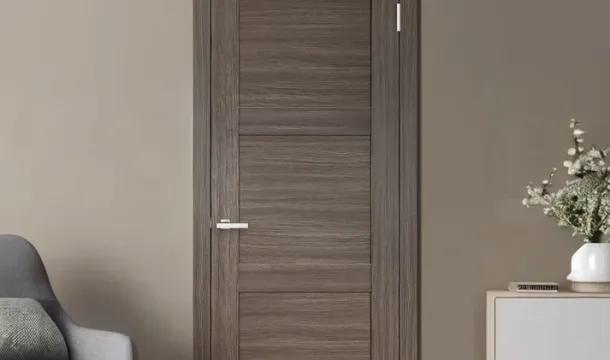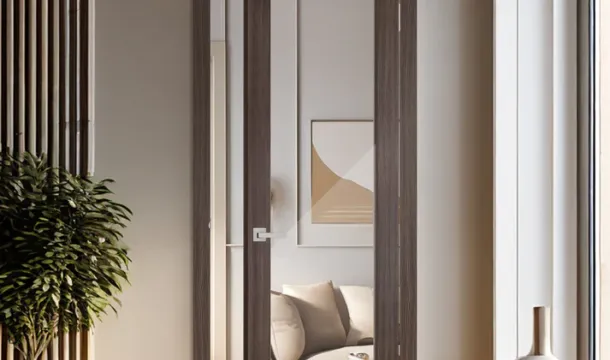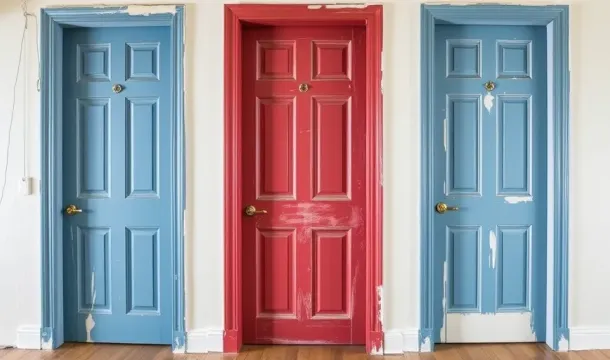How Upgrading Interior Doors Boosts Home Resale Value
Popular Articles
- Choosing the Perfect Interior Doors for Your Canadian Home
- A Complete Guide to Choosing Interior Doors for Canadian Homes
- The Challenges of Painting Interior Doors
- Understanding Interior Doors and Their Role in Your Home
- The Perfect Blend of Reliability and Design: Interior Doors with Italian "Sandwich" Technology
Replacing outdated room entrances can raise a property's market position by up to 5%, according to recent real estate studies in Canada. Investing in quality panel or glass inserts tailored to the home's style not only enhances aesthetic appeal but also improves perceived craftsmanship and durability.
Choosing materials like solid wood or engineered composites ensures longevity while aligning with current design trends, such as minimalist or mid-century modern themes. This approach often results in quicker sales and higher offers, as buyers associate upgraded passageways with overall well-maintained interiors.
Integrating smart hardware options, including soft-close hinges and modern handles, adds subtle sophistication that appeals to discerning purchasers. During renovation planning, prioritizing these functional enhancements alongside visual upgrades maximizes return on investment more effectively than cosmetic fixes alone.
Choosing Door Styles Buyers Prefer
Select door designs that align with contemporary tastes and regional preferences to maximize appeal during renovation projects. In Canadian markets, clean lines and minimalist aesthetics dominate buyer interest, making flush or slab doors with smooth finishes highly sought after. These styles complement a variety of decors and create a sense of spaciousness.
For homes aiming at a more traditional or transitional audience, five-panel craftsman-style doors offer timeless charm without appearing outdated. Their structured look adds character and pairs well with both modern and classic trim work, appealing to a wider demographic.
Material and Finish Impact
Solid wood alternatives like engineered hardwood or MDF with veneer surfaces provide durability while maintaining an upscale appearance preferred by buyers. White or off-white painted doors remain popular for their versatility, brightening interiors and matching most wall colors effortlessly.
Matte finishes outperform glossy ones in current trends, reducing glare and enhancing the perception of quality craftsmanship. Incorporating frosted glass panels can also increase natural light flow between rooms, a feature frequently requested in open-concept renovations.
Functional Style Choices
Sliding barn-style doors have gained traction in urban Canadian homes where space efficiency is crucial. They deliver rustic appeal without sacrificing practicality. Pocket doors serve similar purposes but require careful installation planning during renovation to avoid costly modifications later.
Ultimately, selecting door styles that combine aesthetic appeal with practical benefits will resonate strongly with prospective purchasers, supporting smoother transactions and potentially higher offers.
Materials Impact on Door Longevity
Selecting the right material significantly influences a door's durability and performance during renovation projects. Solid wood doors, especially hardwoods like oak or maple, resist dents and scratches better than softer woods, ensuring decades of use with minimal maintenance. Engineered wood options, such as MDF or HDF, offer moisture resistance and stability, reducing warping in humid climates common across Canada.
Material Options and Their Lifespans
- Solid Wood: Lasts 30+ years with proper care; refinishing restores appearance multiple times.
- MDF/HDF: Resistant to cracking and swelling; lifespan around 15-20 years under normal conditions.
- Fiberglass: Highly durable against dents and moisture; can exceed 25 years without degradation.
- Steel: Durable but prone to dents; requires rust protection to avoid corrosion over time.
Recommendations for Renovation Durability
- Prioritize hardwood species for rooms with high traffic or potential impact.
- Use engineered wood in areas susceptible to humidity fluctuations, like basements or bathrooms.
- Select fiberglass for spaces requiring moisture resistance combined with longevity.
- Ensure finishes include sealants that protect against scratches and water damage.
- Invest in quality hardware compatible with chosen materials to prevent premature wear.
A well-chosen door material not only extends functional life but also minimizes future maintenance costs and preserves aesthetic appealkey factors during any property enhancement aimed at maximizing investment returns.
Cost vs. Value of Door Upgrades
Investing between $200 and $600 per door for replacements typically recoups 70-80% of the expense during a property sale, making it a financially sound renovation choice. Solid wood models command higher upfront costs but offer superior durability and aesthetic appeal, which can justify a premium price to buyers. Conversely, hollow-core alternatives cost less initially (around $100-$150) but may require earlier replacement, reducing long-term return.
Labor expenses usually add 20-30% to the total project cost; opting for pre-hung units can streamline installation and minimize disruption. Prioritizing doors in main living areas or frequently trafficked rooms maximizes impact without extensive outlay. Additionally, selecting designs that complement existing trim and finishes reduces the need for costly adjustments.
Data from recent market analyses indicate that properties with updated passageways often experience faster offers and up to a 5% increase in final sale price compared to similar listings with outdated fixtures. Factoring in energy efficiency improvements through better sealing hardware further elevates appeal while contributing marginal savings on utility bills.
Balancing material quality, style alignment, and installation strategy ensures door renovations deliver measurable financial benefits without excessive investment, supporting a targeted approach tailored to budget constraints and desired market positioning.
Improving Illumination Through Door Selection
Incorporating glass panels or translucent elements into door designs significantly enhances natural light distribution across adjacent spaces. Frosted or textured glass options balance privacy with illumination, making rooms feel larger and more inviting without compromising seclusion.
For renovation projects aiming to optimize daylight penetration, choosing doors with wider glass inserts can reduce the need for artificial lighting during daytime hours. This not only elevates the ambiance but also contributes to energy savings.
Light Transmission Comparison by Door Type
Tactical Placement for Light Optimization
Selecting doors for interior passageways that connect dimmer rooms to those with abundant sunlight can dramatically improve overall brightness. For example, installing glazed sliding doors between a hallway and living room facilitates light flow without sacrificing spatial separation.
Avoid heavy solid-panel options in narrow corridors where natural light is scarce; instead, opt for designs incorporating glass segments or louvered slats that promote air and light circulation simultaneously.
This approach aligns well with modern renovation trends prioritizing open, airy interiors while maintaining functional zoning within living areas.
Door Installation Tips for ROI
Ensure precise measurements before ordering replacement panelsincorrect sizing leads to costly adjustments and delays during renovation. Use a laser level to verify that door frames are perfectly plumb and square; misaligned frames cause operational issues and diminish perceived quality.
Opt for pre-hung units when possible, as they simplify installation and improve sealing against drafts, directly contributing to energy efficiencya factor increasingly valued by buyers. When retrofitting into existing openings, reinforce jambs with shims at hinge locations to prevent sagging over time.
Invest in high-quality hardware with durable finishes resistant to wear and corrosion; polished brass or matte black hinges add a subtle upgrade that appeals visually without significant expense. Apply expanding foam insulation around the frame during fitting to enhance soundproofing and thermal performance.
Seal all gaps meticulously using paintable caulk, especially along trim edges, to create a clean finish and prevent moisture intrusion that can lead to warping or mold growth post-renovation. Avoid rushing the curing processallow adhesives and sealants adequate drying time for long-lasting results.
Finally, consider professional assistance for complicated installations involving custom sizes or non-standard wall thicknesses; expert fitting reduces callbacks and preserves structural integrity, supporting a higher return on investment through increased buyer confidence.
Popular Articles
- Choosing the Perfect Interior Doors for Your Canadian Home
- A Complete Guide to Choosing Interior Doors for Canadian Homes
- The Challenges of Painting Interior Doors
- Understanding Interior Doors and Their Role in Your Home
- The Perfect Blend of Reliability and Design: Interior Doors with Italian "Sandwich" Technology

Choosing the Perfect Interior Doors for Your Canadian Home

A Complete Guide to Choosing Interior Doors for Canadian Homes
